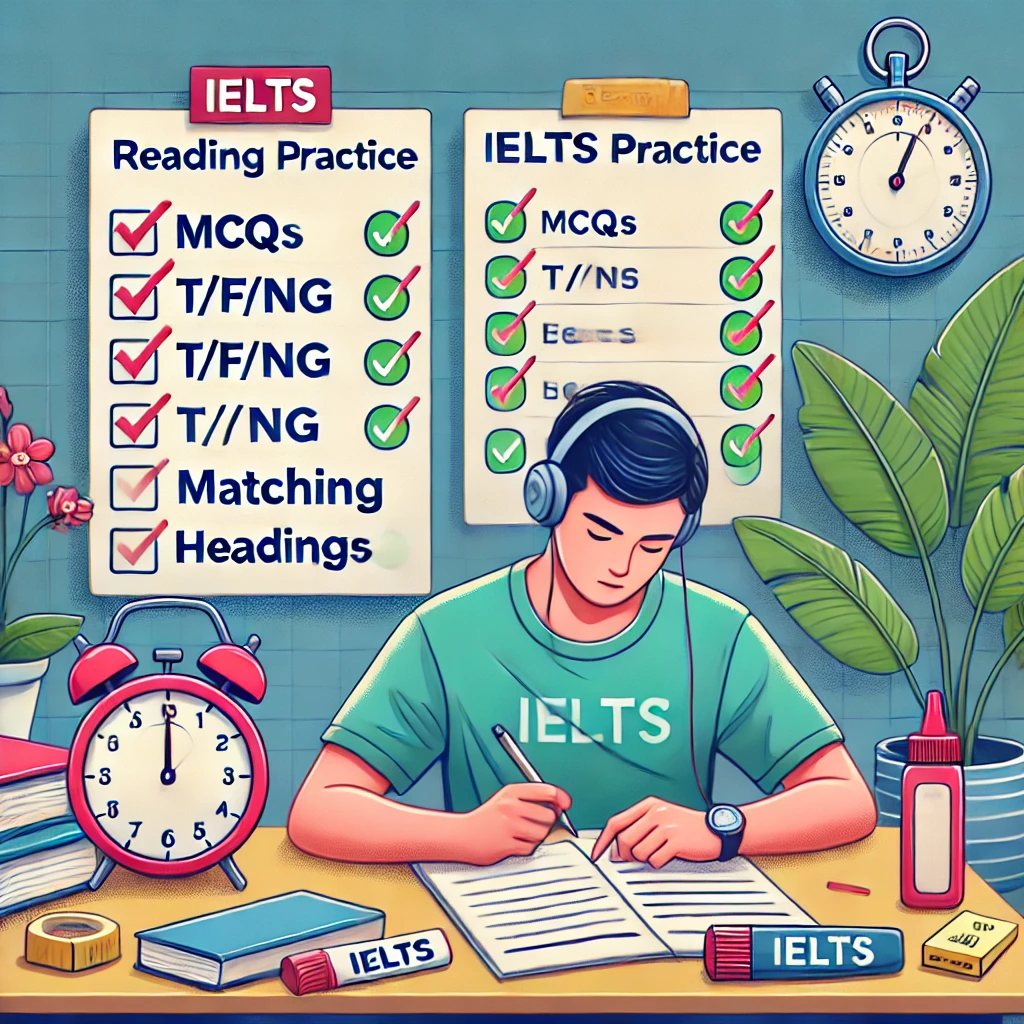The IELTS Reading section is often considered challenging due to its variety of question types and strict time limits. However, with the right strategies, you can improve both comprehension and speed. Here’s a comprehensive breakdown of the different question types and effective methods to tackle them.
Question Types in IELTS Reading
- Multiple Choice Questions (MCQs): 🏆
- Require selecting the correct answer from several options.
- Often test understanding of specific details or main ideas.
- True/False/Not Given (T/F/NG): ✔️/❌/❓
- Test your ability to identify whether statements are true, false, or not mentioned in the text.
- Matching Headings: 🔍
- Involves matching headings to the correct paragraphs or sections.
- Tests your ability to identify main ideas.
- Sentence Completion: 🔹
- Requires filling in the blanks with words from the passage.
- Focuses on vocabulary and comprehension.
- Summary/Flowchart/Table Completion: 🗊1
- Involves completing summaries, flowcharts, or tables using information from the text.
- Matching Information: 🗋
- Matches specific information or details to the correct paragraph.
- Short Answer Questions: 🖊️
- Require concise answers to questions based on the text.
Strategies to Improve Comprehension and Speed
- Skimming and Scanning: 🔎
- Skim the text to understand its structure and main ideas.
- Scan for keywords and phrases to locate specific information quickly.
- Understanding Question Keywords: 🔍
- Highlight keywords in the questions to guide your reading.
- Pay attention to synonyms and paraphrased phrases in the text.
- Time Management: ⏳
- Allocate 1-2 minutes to skim the passage.
- Spend around 1 minute per question, adjusting based on difficulty.

- cus on the Instructions: 🔒
- Read the instructions carefully, especially for word limits in completion tasks.
- Practice Paraphrasing: 🌍
- Improve your ability to recognize rephrased ideas by practicing paraphrasing.
- Develop Vocabulary: 🔐
- Enhance your understanding of academic vocabulary by reading diverse materials.
- Practice Regularly: 📊
- Make sure to get trainers guidance and feedback on tests.
- Time your practice sessions to mimic exam conditions.
Example Strategy for T/F/NG Questions:
- Read the statement and underline key ideas. 🖊️
- Find the relevant section in the text. 🔎
- Determine if the statement matches (True), contradicts (False), or isn’t mentioned (Not Given). ✔️/❌/❓
Example Strategy for Matching Headings:
- Skim each paragraph to identify the main idea. 🔍
- Match the main idea with the most suitable heading. 🔹
- Eliminate headings that clearly do not fit. ❌
Additional Tips:
- Don’t get stuck on one question for too long. ⏳
- Practice reading complex texts, such as newspapers and journals, to build stamina. 🔄
- Focus on accuracy first, then work on improving speed. 🔸
Ready to master IELTS Reading? Start practicing today! Explore our IELTS resources for more tips and access to practice tests with our experts.